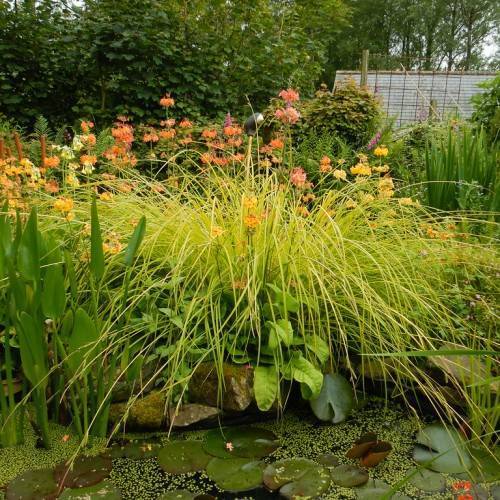
Golden Fruit Sedge
Carex aurea
Also Known As - Golden SedgeWatering:
Minimal
Hardiness Zone:
Flowers:
Flowers
Sun:
Sun, Partial Shade
Soil:
Clay, Sand
Leaf:
Yes
Growth Rate:
Low
Salt Tolerant:
Yes
Care Level:
Medium
watering
Scorched Alpine Sedge should be given an average, light watering once per week. A thorough deep soaking is preferable to frequent light waterings. Depending on the humidity and weather conditions, you may have to adjust the frequency and amount of water for the plant. If the air is very dry, you may need to water every 4-5 days. If the air is very humid, you may need to water every 7-10 days. Be sure to monitor the soil moisture regularly. The soil should be moist but not soggy, and should never completely dry out. During the growing season, additional water may be required during periods of drought.
sunlight
Scorched Alpine Sedge is native to alpine and subalpine ecosystems and requires full sunlight to thrive. It thrives best in areas receiving direct sunlight for at least 6 to 8 hours a day during the growing season. It can tolerate short periods of partial shade, but the plant will become weak and die if it receives too much shade. The plant benefits from a cool environment and should therefore not be planted in areas with very hot temperatures. In the winter, when sunlight is lower due to shorter days, the plant does not require as much light and should survive without getting burned.
pruning
Scorched Alpine Sedge should be pruned lightly in late winter or early spring. This plant benefits from light pruning to encourage dense growth and help maintain its compact size. Pruning should involve removing any brown and dried foliage and any dead or weak stems that may be present. Pruning should be done carefully to avoid damage to the crown. This species can also be lightly pruned to shape or thin out overcrowded areas. Cut back stems to the base of the plant to encourage bushier growth. Avoid cutting lower than a third of the plant, as it may not recover.
